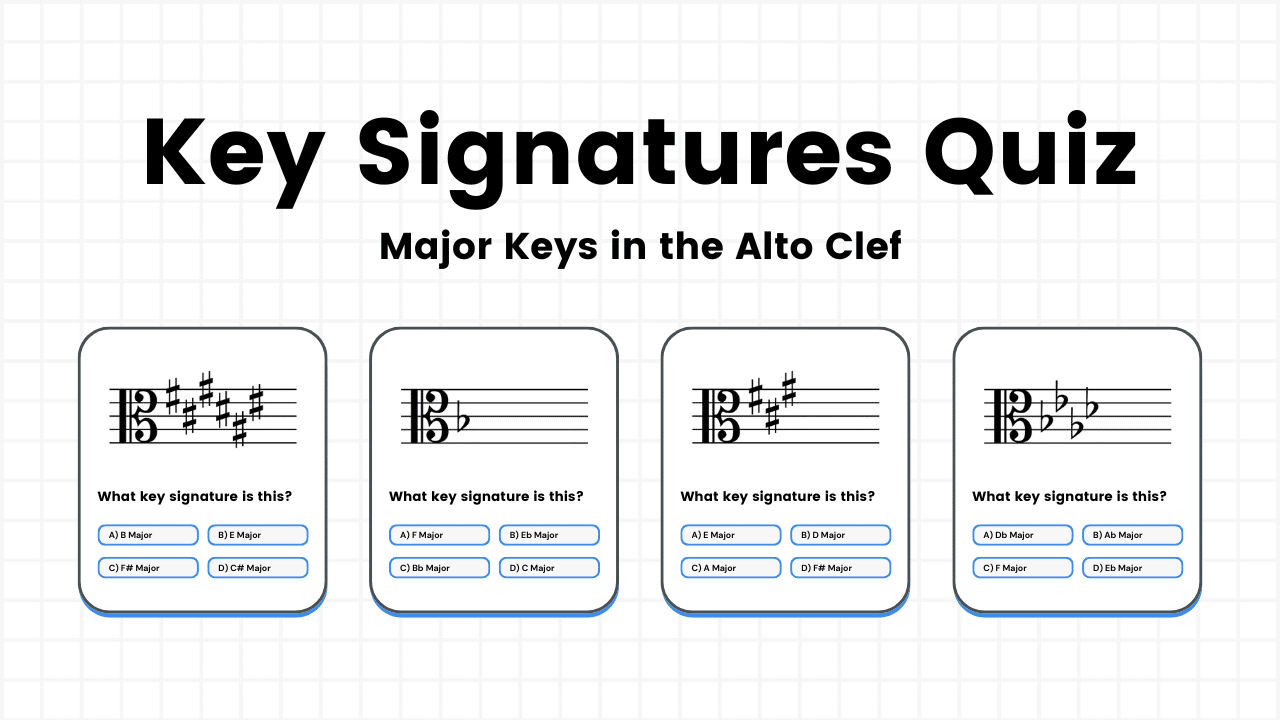In music, we indicate to musicians when to play by using different types of musical notes. But what happens when we want to tell the musician not to play? It’s times like this that we use a type of symbol called a rest.
In this post, we’re going to look in depth at what rests are, how we use them, and all the different types. Let’s get started.
What is a Rest?
A Rest in music is a type of symbol that indicates that the musician should not play and that there should be silence.
Every type of note, like quarter notes, half notes, etc, has a corresponding rest symbol that has the same time value.
The Types of Rests
Whole Rest (Semibreve Rest)

A Whole Rest (Semibreve Rest) is drawn as a small rectangle that hangs off the 2nd line from the top of the staff.
It has a time value of four beats, the same as a whole note.
Half Rest (Minim Rest)

The Half Rest (Minim Rest) is a small rectangle that is very similar to the whole rest, but instead of hanging from the second line, it sits on the middle line of the staff.
It has a time value of two beats, the same as a half note.
Quick Tip!
To remember the difference between a whole rest and half rest, I think of the whole rest being bigger (it lasts longer) than a half note, and so because it’s “heavier,” it hangs off the staff. The half rest is “lighter” and so it sits on the staff.
Quarter Rest (Crotchet Rest)

The Quarter Rest (Crotchet Rest) is quite complicated to draw.
It kind of looks like a skewed letter Z with a small letter C on the bottom.
It’s drawn right in the middle of the staff, between the top and the bottom lines.
It has a time value of one beat, the same as a quarter note.
Eighth Rest (Quaver Rest)

Up next, we have an Eighth Rest (Quaver Rest), which looks like a small number seven with a little blob on the end.
Like the quarter rest, it sits right in the middle of the staff, sitting on the 4th line from the top.
It has a time value of 1/2 of a beat, the same as an eighth note.
Sixteenth Rest (Semiquaver Rest)

Lastly, we have a Sixteenth Rest (Semiquaver Rest), which is very similar to the eighth rest but slightly taller and has two flicks.
It sits on the bottom line of the staff.
It has a time value of 1/4 of a beat, the same as a sixteenth note.
Thirty Second Rest (Demisemiquaver Rest)

In the same way that we can keep adding new tails to the different types of music notes to half their time value, we can do the same with rests.
When we add another flick to the sixteenth rest, it half the time value and we get a Thirty Second Rest (Demisemiquaver Rest).
It has the time value of 1/8 of a beat, the same as a thirty second note.
Double Whole Rest (Breve Rest)

Another type of rest you might see is a Double Whole Rest (Breve Rest).
It has a time value of 8 beats, the same as a double whole note.
It’s a lot more rare and you’ll only see it in time signatures like 4/2 as there aren’t enough beats in a measure to warrant using one.
Dotted Rests
Just as you can have dotted notes, which make the note last longer by half its time value, you can also have dotted rests, which make the rest last longer by half its time value.
In other words, if you have a dotted rest, it’s worth one and a half times its time value.
Dotted Half Rest (Dotted Minim Rest)

Here is a Dotted Half Rest (Dotted Minim Rest).
This has a time value of 3 beats, the same time value as a dotted half note.
Dotted Quarter Rest (Dotted Crotchet Rest)

This is a Dotted Quarter Rest (Dotted Crotchet Rest).
It has a time value of 1 and 1/2 beats, the same as a dotted quarter note.
Dotted Eighth Rest (Dotted Quaver Rest)

And here is a Dotted Eighth Rest (Dotted Quaver Rest).
This has a time value of 3/4 of a beat, the same time value as a dotted eighth note.
Where To Place The Dot
One common question about dotted rests is which space of the staff to place the dot in.
The dot always sits in the second space from the top of the staff. No matter which rest you’re using.

Side Note
One other thing to mention is that while you can have dotted rests, you can’t have tie rests together. Instead, you should use another rest.
What Rest do you use for a Whole Measure of Silence?
The last thing to mention about rests has to do with having a whole measure of silence.
Whenever you want an entire measure to be silent, you always use a whole rest. This is the case even if the time signature is 2/4 or 3/4.
See the examples below:



Ready to Try Our Quiz?
Now that you’ve read our guide, it’s time to see how well you’ve taken it all in. Below is our quiz on the different types of rests.
Summing Up
That’s it for our guide to rests in music, we hope you found it helpful.
If you have any further questions or if you think we haven’t covered something, get in touch and we’ll be happy to help.



